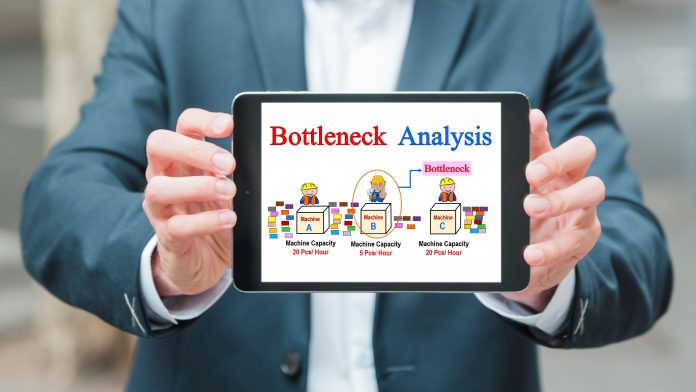Stakeholder Theory: What Is It, Working, Benefits, Challenges, And More

Stakeholder theory is an ethical concept that stakeholders of a business need to follow to address outcomes of business, profits, trends, and more. The concept also includes the collective impact of the factors above on all stakeholders of the business. The stakeholders of a business include its shareholders, employees, customers, suppliers, financers, government, as well as other individuals and groups.
In this article, you will learn about the general details of stakeholder theory. Apart from that, you will also learn about how this theory works for businesses and their stakeholders. Furthermore, you will also learn about the major benefits and challenges of the stakeholder theory. We will describe each of the benefits and challenges for your better understanding. Hence, to learn more, read on through to the end of the article.
What Is Stakeholder Theory?
According to Investopedia,
“Stakeholder theory describes the composition of organizations as a collection of various individual groups with different interests. These interests, taken together, represent the will of the organization. As much as possible, business decisions should consider the interests of this collective group and advance overall cooperation.”
The stakeholder theory shows the importance of relationships between various stakeholders of a business entity. It also shows how the management of a business must view and manage stakeholders. It describes how the business must treat its stakeholders to make the most economic and social impact to achieving the best results. The target is to maximize the profit of the business and make a strong overall impact.
A business needs to consider the various differences in the priorities of stakeholders. This applies to stakeholders – both internal and external. Internal stakeholders include investors, employees, and owners. On the other hand, external stakeholders include the individuals and groups that are affected by the decisions of the company. These include creditors and suppliers.
An Example
Let’s take the help of an example to explain stakeholder theory. Consider a company where the management and shareholders are in a conflict. Here, the management might make a decision that might not necessarily enhance the value of a shareholder. This can create conflict with the interests of the shareholders.
In this case, the organization can choose performance-based compensation. This helps the organization to tie management incentives to the value of the shareholder. This is one way of addressing stakeholder theory. However, there are various other issues that the company might face. In this case, performance-based compensation will help in boosting short-term performance. This will lead to a negative effect in the company’s long-term growth.
How Does Stakeholder Theory Work?
R. Edward Freeman came up with the stakeholder theory in the year 1984. As per the theory, a business firm must create value for all stakeholders of the organization. Only thinking about the shareholders will not help a business in its growth.
According to Nerdwallet.com,
“When the concept matured, more people understood people’s relationships beyond, within, and outside the entity. The stakeholder theory of the firm brings together the concepts of market and resource utilization and its socio-political impact of it. It defines how managers should understand and treat the stakeholders so that stakeholders’ interests come above all other interests.”
Principles of Stakeholder Theory
There are mainly six main principles of the stakeholder theory:
- Principle of Entry & Exit:
- Principle of Externalities
- Principle of Agency
- Principle of Governance
- Principle of Contract Cost
- Principle of Limited Immortality
What Are The Major Benefits And Challenges Of Stakeholder Theory?
This theory works since it considers all the interests of the (business, project, and/or organization).
According to Indeed.com,
“This theory understands that motivated and invested stakeholders may produce better results for the business and help the organization achieve more ambitious goals. Occasionally, you can apply the theory to ethical concepts, such as responsibility to society, nature, and the future, besides profit maximization and shareholder value creation.”
The following are the major benefits and challenges of stakeholder theory:
Benefits
Here are the major benefits of stakeholder theory that will be advantageous for you:
- All the employees of your organization will benefit from it. As a result, you will see an increase in productivity, lower employee turnover, employee satisfaction, and improved mental health of employees. These factors will help the business in further talents for the company.
- You will have happier customers, which is essential for a business. If the business gets positive feedback from regular customers, they will become unpaid marketers for the products of the company. This helps in increasing the overall sales of the company.
- As the business’s cash flow grows, the finance providers of the company are assured of the company’s repaying capacity.
- Often, governments provide help to businesses that expand their operations to new areas of the country. Apart from that, it also helps the business to manage its cash flows in a better manner.
Challenges
Here are a few challenges of stakeholder theory that you need to be aware of:
- If a business follows stakeholder theory, it needs to care about all people who are affected by the business’s decisions. Often, a business puts less focus on the company’s shareholders.
- Since the shareholders have invested their money to maximize returns, the management has an obligation to keep the former’s interests as the main focus.
- It is hard (impossible) to fulfill the interests of everyone associated with the organization.
Bottom Line
Hope this article was helpful for you in getting a better understanding of stakeholder theory. This is an ethical concept where the business considers the interests of all its stakeholders. The business addresses the outcome, trends, profits, etc., associated with a business decision. The collective impact falls on the employees, shareholders, and all other stakeholders.
The stakeholder theory works as per its six principles. R. Edward Freeman was the first person to coin the term stakeholder theory and conceptualize it in his 1983 article. Do you have more information to add regarding this ethical theory in business management? Share your thoughts and opinions with us in the comments section below.
Continue Reading For More Business-Related Articles!!













